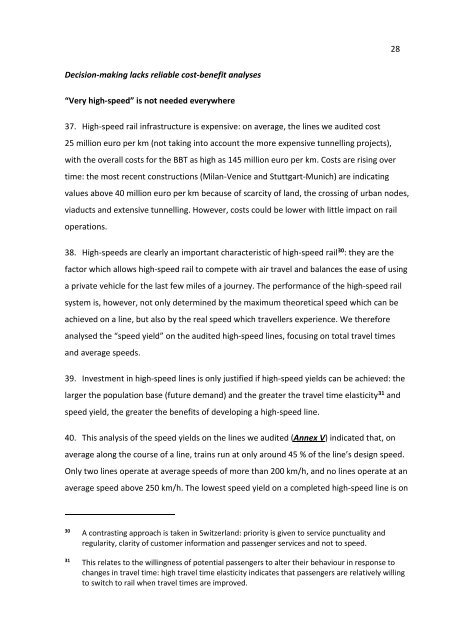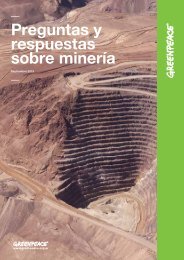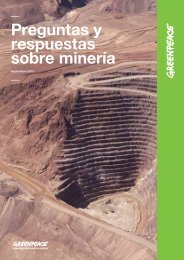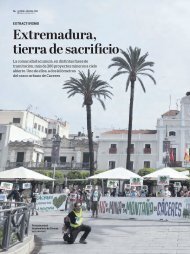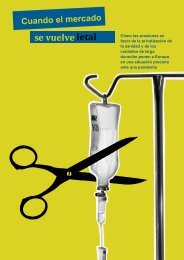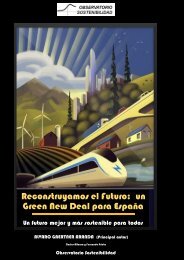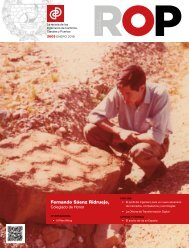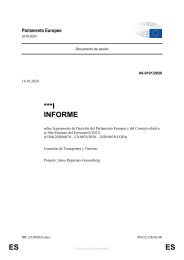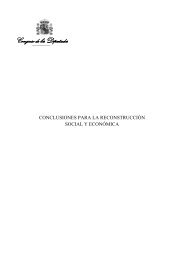La Red de Alta Velocidad Europea: Más un mosaico poco efectivo que una realidad
El presente comunicado de prensa tiene por objeto ofrecer una síntesis del contenido esencial del informe especial del Tribunal de Cuentas Europeo. El texto íntegro del informe puede consultarse en www.eca.europa.eu.
El presente comunicado de prensa tiene por objeto ofrecer una síntesis del contenido esencial del informe especial del
Tribunal de Cuentas Europeo.
El texto íntegro del informe puede consultarse en www.eca.europa.eu.
Create successful ePaper yourself
Turn your PDF publications into a flip-book with our unique Google optimized e-Paper software.
28<br />
Decision-making lacks reliable cost-benefit analyses<br />
“Very high-speed” is not nee<strong>de</strong>d everywhere<br />
37. High-speed rail infrastructure is expensive: on average, the lines we audited cost<br />
25 million euro per km (not taking into acco<strong>un</strong>t the more expensive t<strong>un</strong>nelling projects),<br />
with the overall costs for the BBT as high as 145 million euro per km. Costs are rising over<br />
time: the most recent constructions (Milan-Venice and Stuttgart-M<strong>un</strong>ich) are indicating<br />
values above 40 million euro per km because of scarcity of land, the crossing of urban no<strong>de</strong>s,<br />
viaducts and extensive t<strong>un</strong>nelling. However, costs could be lower with little impact on rail<br />
operations.<br />
38. High-speeds are clearly an important characteristic of high-speed rail 30 : they are the<br />
factor which allows high-speed rail to compete with air travel and balances the ease of using<br />
a private vehicle for the last few miles of a journey. The performance of the high-speed rail<br />
system is, however, not only <strong>de</strong>termined by the maximum theoretical speed which can be<br />
achieved on a line, but also by the real speed which travellers experience. We therefore<br />
analysed the “speed yield” on the audited high-speed lines, focusing on total travel times<br />
and average speeds.<br />
39. Investment in high-speed lines is only justified if high-speed yields can be achieved: the<br />
larger the population base (future <strong>de</strong>mand) and the greater the travel time elasticity 31 and<br />
speed yield, the greater the benefits of <strong>de</strong>veloping a high-speed line.<br />
40. This analysis of the speed yields on the lines we audited (Annex V) indicated that, on<br />
average along the course of a line, trains r<strong>un</strong> at only aro<strong>un</strong>d 45 % of the line’s <strong>de</strong>sign speed.<br />
Only two lines operate at average speeds of more than 200 km/h, and no lines operate at an<br />
average speed above 250 km/h. The lowest speed yield on a completed high-speed line is on<br />
30<br />
A contrasting approach is taken in Switzerland: priority is given to service p<strong>un</strong>ctuality and<br />
regularity, clarity of customer information and passenger services and not to speed.<br />
31<br />
This relates to the willingness of potential passengers to alter their behaviour in response to<br />
changes in travel time: high travel time elasticity indicates that passengers are relatively willing<br />
to switch to rail when travel times are improved.


